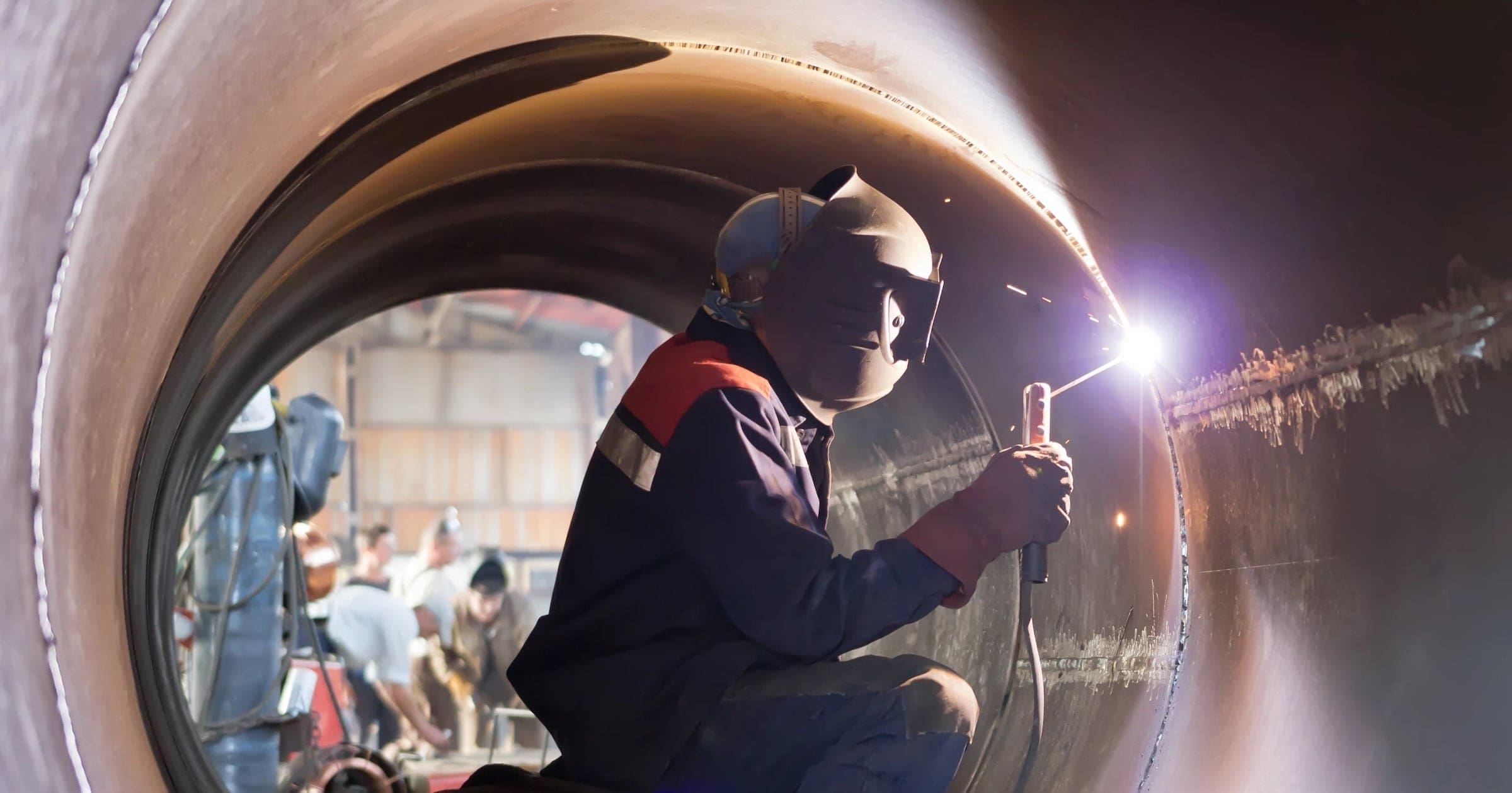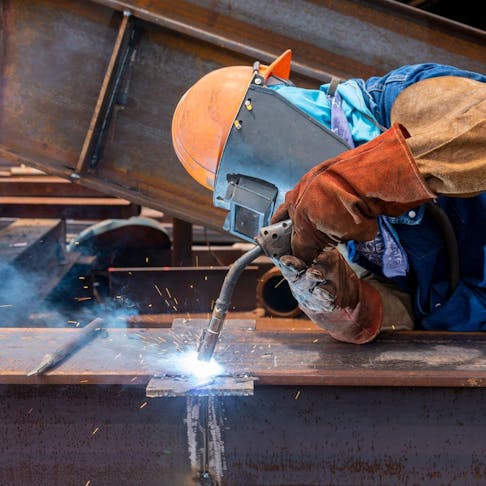Usual Welding Repair Work Issues and Just How to Address Them Successfully
Welding repair services often experience a variety of problems that can endanger the integrity of the end product. Common issues consist of inadequate penetration, porosity, and misalignment, amongst others. Each flaw provides special obstacles that call for details strategies for resolution. Recognizing these concerns is vital for welders aiming to boost their skills and outcomes. This conversation will discover these typical welding repair concerns and reliable methods to address them.
Poor Infiltration
Inadequate penetration takes place when the weld metal stops working to totally fuse with the base material, resulting in weak joints and possible architectural failings. This issue commonly stems from not enough heat input, wrong electrode angle, or incorrect welding rate. Welders may experience poor penetration because of a mistake of the necessary specifications for a details product thickness or kind. Furthermore, contamination on the base material's surface can impede effective bonding, worsening the problem. To address insufficient penetration, welders ought to guarantee proper setups on their tools and preserve a tidy job surface. Normal examination of welds is suggested to recognize any deficiencies early, permitting prompt corrections and the prevention of compromised architectural honesty in bonded assemblies.
Porosity
Porosity is a common flaw in bonded joints that materializes as little gas bubbles trapped within the weld steel. This defect can jeopardize the stability of the weld, causing minimized stamina and potential failure under anxiety. Montana Mobile Welding and Repair. Porosity usually emerges from contamination, wetness, or inappropriate welding strategies, which permit gases to escape right into the liquified weld swimming pool. To address porosity, welders need to guarantee appropriate surface preparation, preserve a tidy workplace, and utilize suitable welding criteria. Additionally, choosing the ideal filler product and securing gas can alleviate gas entrapment. Normal evaluation and screening of welds can assist recognize porosity early, assuring prompt restorative activities are taken, therefore maintaining the quality and dependability of the welded framework
Misalignment
Imbalance in welding can emerge from numerous elements, consisting of improper setup and thermal growth. Recognizing the source is essential for effective resolution. Several modification methods are offered to realign components and assure structural honesty.
Reasons for Imbalance
Welding imbalance often stems from a selection of underlying problems that can endanger architectural stability. One primary reason is incorrect fit-up of components before welding, which can bring about spaces and unequal surfaces. Variants in thermal expansion during the welding procedure can additionally cause distortion, specifically if the products being joined have various coefficients of growth. In addition, poor fixturing and clamping might stop working to hold elements securely in position, bring about movement throughout welding. Inadequately maintained tools, consisting of welding equipments and devices, may introduce disparities in the weld bead, more adding to misalignment. Driver error, stemming from inadequate training or experience, can also play a considerable function in creating misaligned welds.

Improvement Strategies Available
Addressing imbalance effectively requires a combination of restorative strategies customized to the certain problems at hand. One common approach is using fixtures or jigs to hold components in the appropriate setting during welding, making certain consistent placement. In addition, preheating the products can help in reducing distortion and improve fit-up. For substantial imbalance, mechanical adjustment methods, such as utilizing hydraulic jacks or clamps, can be utilized to remedy the placement before welding. Post-weld warmth therapy may likewise be necessary to ease anxieties triggered by misalignment. Finally, mindful assessment and change throughout the arrangement stage can protect against misalignment problems from ending up being considerable problems, advertising a smoother welding process and enhancing general architectural honesty.
Distortion
Distortion is a typical obstacle in welding that can arise from numerous factors, including uneven cooling and heating. Comprehending the reasons for distortion is crucial for applying efficient prevention strategies. Resolving this problem not just improves architectural honesty but additionally enhances the overall top quality of the weld.
Reasons for Distortion
When subjected to the intense warmth of welding, materials usually undergo modifications that can cause distortion. This sensation mainly arises from thermal development and contraction during the welding process. As the weld location heats up, the product broadens; upon cooling, it contracts, which can create internal anxieties. On top of that, uneven home heating throughout a work surface can exacerbate these tensions, leading to warping or flexing. The kind of material also plays a substantial role; steels with differing thermal conductivity and coefficients of development might respond in a different way, leading to uncertain distortions. Additionally, inadequate joint design and inadequate fixturing can add to imbalance during welding, enhancing the probability of distortion. Understanding these reasons is essential for effective welding repair and avoidance strategies.
Avoidance Techniques
Efficient prevention methods for distortion throughout welding concentrate on controlling warm input and making certain appropriate joint layout. Preserving a regular warm input aids to minimize thermal growth and contraction, which can lead to distortion. Making use of methods such as pre-heating the work surface can also lower the temperature slope, promoting consistent home heating. Additionally, selecting ideal joint styles, such as T-joints or lap joints, can enhance stability and lower stress and anxiety focus. Executing proper fixturing to protect the workpieces in area additionally aids in preserving positioning throughout the welding process. Lastly, staggered welding series can disperse warmth more equally, avoiding localized distortion. By applying these approaches, welders can greatly lower the possibility of distortion and improve the total high quality of their welds.
Splitting
Breaking is a common problem experienced in welding fixings, often arising from different aspects such as improper cooling rates, material choice, or insufficient joint prep work. The incident of fractures can substantially jeopardize the integrity of the weld, bring about possible failings throughout procedure. To address this issue, welders need to first evaluate the advanced welding origin, ensuring that products are compatible and properly selected for the details application. Additionally, controlling the cooling rate during the welding process is vital; rapid cooling can induce anxiety and lead to splitting. Correct joint style and prep work also add to reducing the danger. Applying these techniques can enhance weld high quality and sturdiness, ultimately reducing the possibility of fracturing in finished weldments.

Incomplete Fusion
A significant problem in welding repair work is incomplete combination, which occurs when the weld metal does not sufficiently bond with the base product or previous weld passes - Fabrication. This defect can bring about weaknesses in the joint, potentially compromising the stability of the welded framework. her explanation Variables contributing to insufficient combination consist of not enough warmth input, incorrect welding technique, and contamination of the surface areas being signed up with. To resolve this issue effectively, welders must guarantee proper pre-weld cleaning and surface prep work, along with adjust their welding parameters to accomplish ample infiltration and blend. Normal assessment during the welding process can likewise help identify insufficient fusion early, permitting timely rehabilitative measures to enhance the total top quality of the weld
Overheating
While welding repairs can enhance architectural honesty, overheating presents a substantial obstacle that can lead to material deterioration. Excessive warm throughout welding can modify the mechanical residential or commercial properties of metals, resulting in lowered stamina, increased brittleness, and warping. This phenomenon is particularly important in high-stress applications where architectural integrity is vital. Determining getting too hot can entail visual evaluations for staining or distortion, as well as monitoring temperature throughout the welding process. To alleviate the risks connected with overheating, welders must utilize suitable methods, such as managing warmth input, changing travel speed, and utilizing ideal filler products. In addition, executing pre- and post-weld warm treatments can help restore material properties and boost the overall top quality of the repair service, making certain long-term efficiency and safety and security.
Regularly Asked Concerns
What Are the Typical Indications of a Welding Defect?

Just How Can I Test My Welds for High quality?
To check welds for high quality, one can utilize aesthetic examinations, ultrasonic screening, and radiographic methods. Each technique guarantees structural stability, identifies issues, and validates kelly welding adherence to specified standards, ultimately boosting the dependability of the welded joints.
What Security Precautions Should I Take While Welding?
When welding, one should focus on safety by using proper personal safety equipment, making sure appropriate ventilation, safeguarding combustible products away, keeping a tidy work area, and being mindful of surroundings to stop injuries and mishaps.
Can I Repair a Weld Without Remodeling the Entire Joint?
Fixing a weld without remodeling the whole joint is feasible, depending upon the damages (Fabrication). Methods such as grinding, adding filler material, or using a welding procedure can efficiently resolve details problems while maintaining the surrounding structure
What Devices Are Essential for Efficient Welding Repair Works?
Crucial tools for reliable welding repair services include a welding machine, cord brush, mill, safety equipment, clamps, and filler products. Each tool plays an important role in making certain high quality and security during the repair process. Porosity commonly arises from contamination, moisture, or inappropriate welding strategies, which enable gases to escape right into the molten weld pool. Inadequately maintained tools, consisting of welding machines and tools, might present disparities in the weld bead, more contributing to imbalance. When subjected to the extreme warm of welding, materials typically undertake modifications that can lead to distortion. Splitting is a typical concern come across in welding repair services, commonly resulting from different aspects such as incorrect air conditioning prices, material selection, or inadequate joint prep work. A considerable issue in welding repair services is insufficient blend, which happens when the weld steel does not sufficiently bond with the base material or previous weld passes.